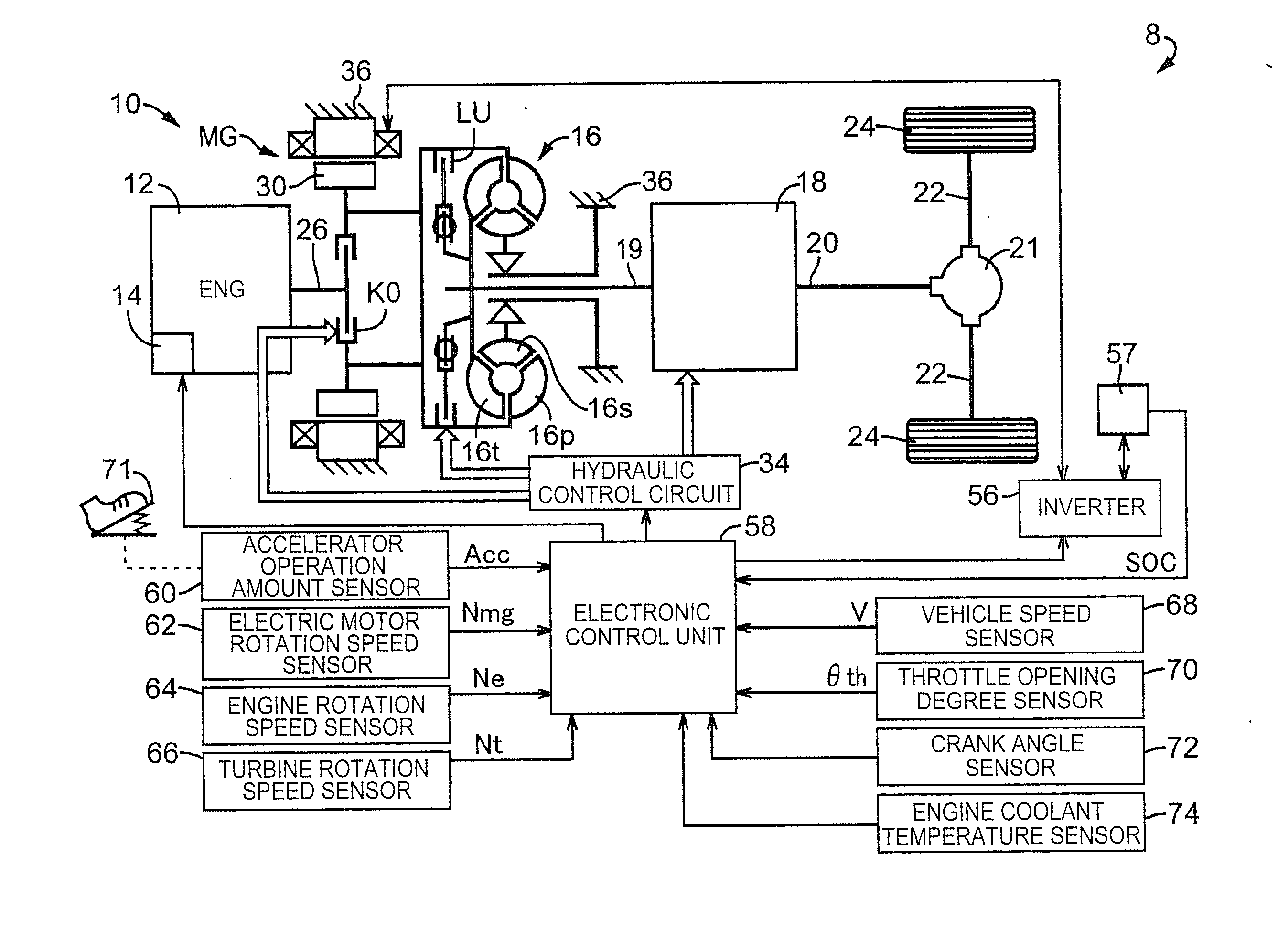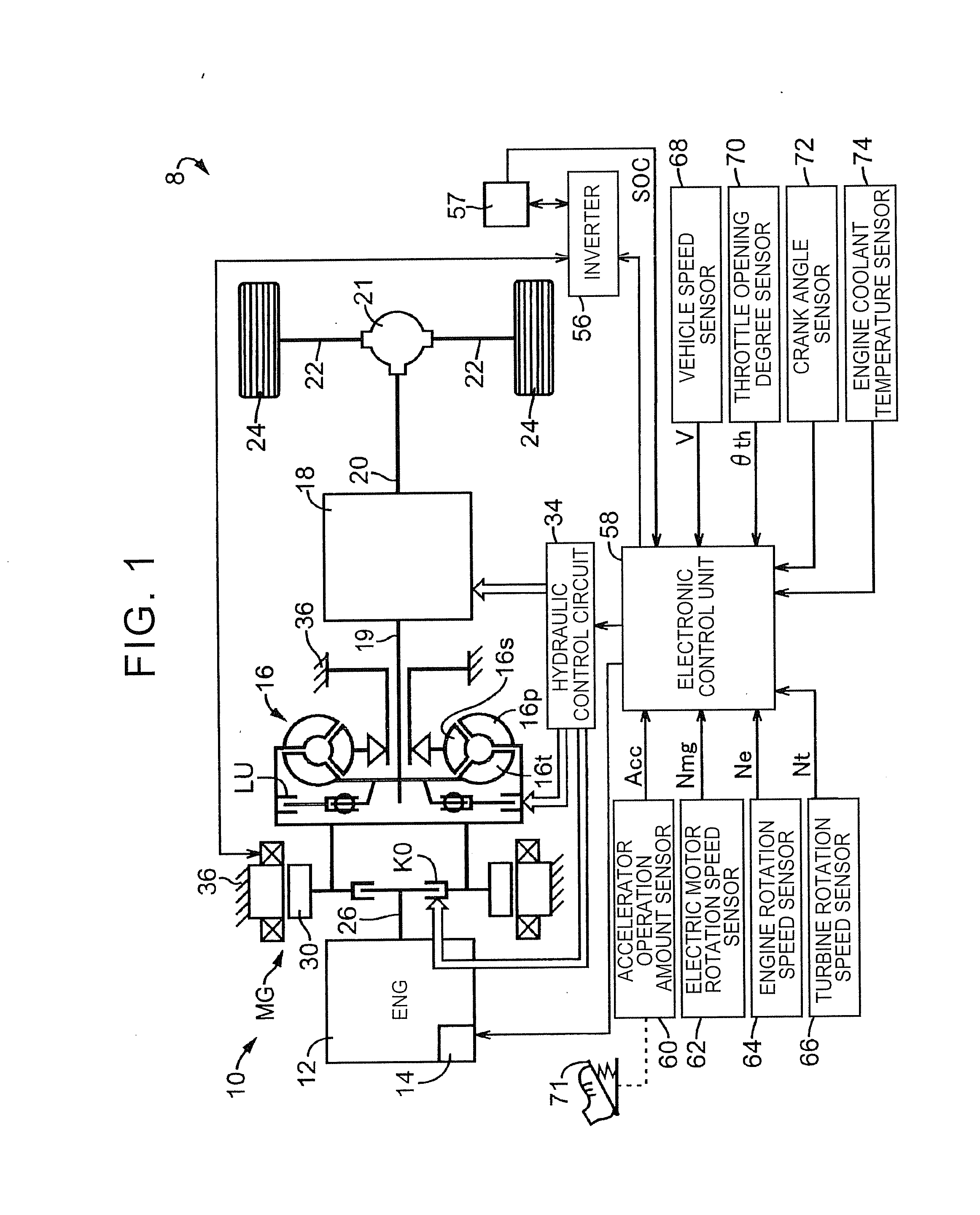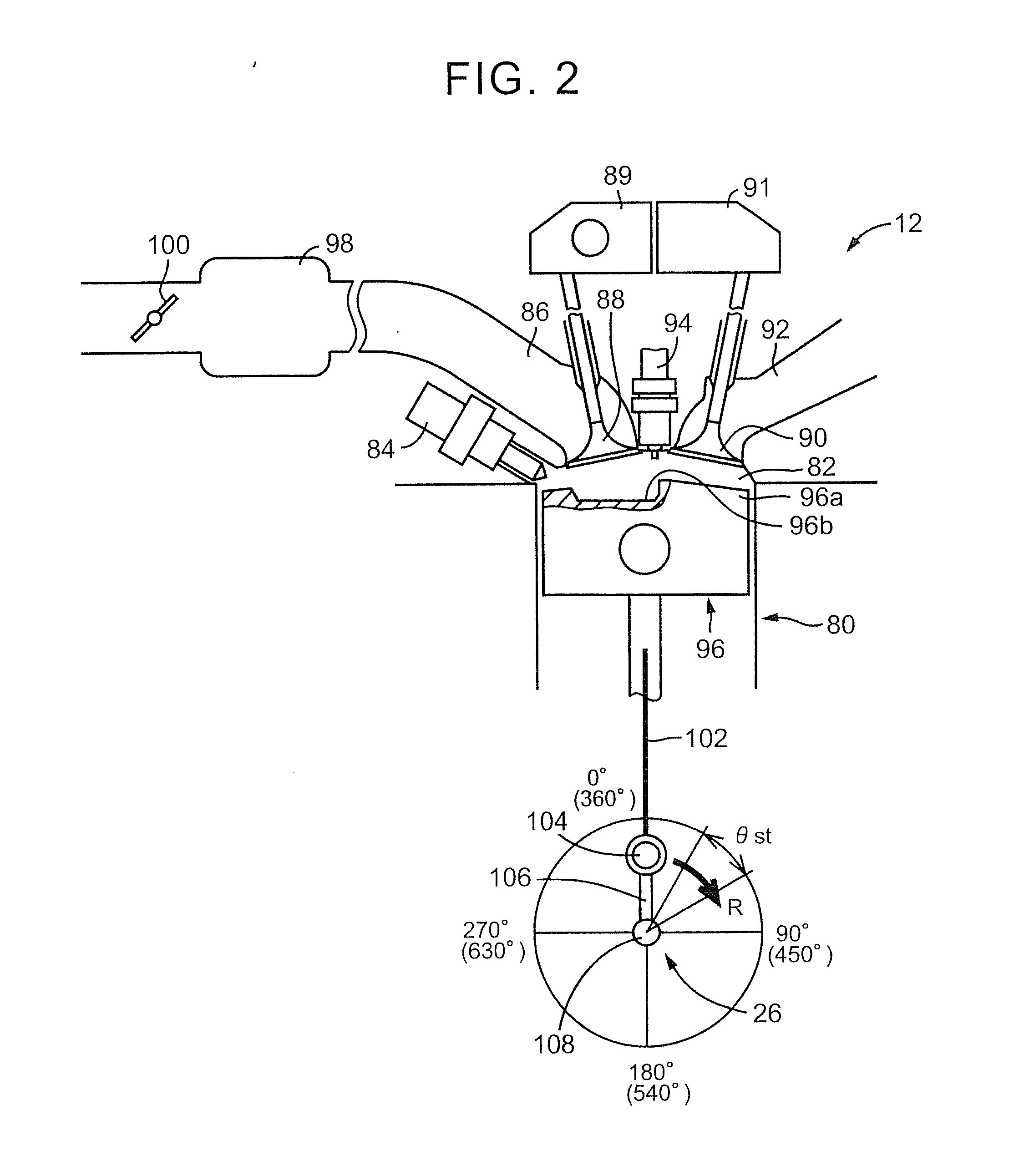Control device and control method for vehicle
a control device and control method technology, applied in the direction of engine-driven generators, machines/engines, transportation and packaging, etc., can solve the problems of increase of engine torque fluctuations, engine torque rise, etc., to improve fuel economy, and poor controllability of engine torqu
- Summary
- Abstract
- Description
- Claims
- Application Information
AI Technical Summary
Benefits of technology
Problems solved by technology
Method used
Image
Examples
Embodiment Construction
[0022]Hereinafter, an embodiment of the invention will be described in detail with reference to the accompanying drawings.
[0023]FIG. 1 is a view that conceptually shows the configuration of a drive system of a hybrid vehicle 8 (hereinafter, simply referred to as “vehicle 8”) according to the embodiment of the invention. The hybrid vehicle 8 shown in FIG. 1 includes a vehicle drive device 10 (hereinafter, referred to as “drive device 10”), a differential gear unit 21, a pair of right and left axles 22, a pair of right and left drive wheels 24, a hydraulic control circuit 34, an inverter 56 and an electronic control unit 58. The drive device 10 includes an engine 12, an engine output control unit 14, an electric motor MG, an engine separating clutch K0, a torque converter 16 and an automatic transmission 18. The engine 12 can function as a traveling drive source. The engine output control unit 14 starts or stops the engine 12 and executes engine output control, such as throttle contro...
PUM
 Login to View More
Login to View More Abstract
Description
Claims
Application Information
 Login to View More
Login to View More - R&D
- Intellectual Property
- Life Sciences
- Materials
- Tech Scout
- Unparalleled Data Quality
- Higher Quality Content
- 60% Fewer Hallucinations
Browse by: Latest US Patents, China's latest patents, Technical Efficacy Thesaurus, Application Domain, Technology Topic, Popular Technical Reports.
© 2025 PatSnap. All rights reserved.Legal|Privacy policy|Modern Slavery Act Transparency Statement|Sitemap|About US| Contact US: help@patsnap.com



